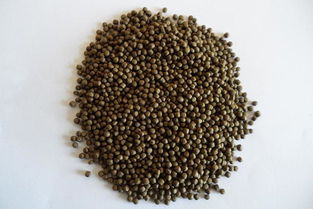Six Key Points for Efficient Use of Fishery Feed

Feed feeding is a key link in aquaculture. Some fishermen do not know the amount of feed properly, do not know how to identify the hunger and satiety of fish, and do not pay attention to feeding methods, resulting in low yield, many diseases and poor economic benefits. In this paper, the techniques of feed efficient use in the practice of aquaculture are summarized as follows for reference: 150kg per hour floating fish feed machinery
1. Attention should be paid to the control of routine standards and the strict control of feeding.
Material quality Microwave sterilization machinery and equipment
In spring, the water temperature is low, the fish is small and the food intake is small. When the temperature rises in clear weather, a small amount of concentrate feed can be put in.
When the temperature rises above 15 C, the feeding amount can gradually increase, and the daily feeding amount accounts for about 1% of the total weight of fish.
When the water temperature rises to about 20 C in early summer, the daily feeding amount accounts for 1%~2% of the total weight of the fish, but it is also a season with many diseases.
Therefore, we should pay attention to proper feeding and ensure that the feed is palatable and even. When the water temperature rises above 30 C in midsummer, fish have strong appetite and grow rapidly.
It is necessary to increase feeding, which accounts for 3%~4% of the total weight of fish. However, attention should be paid to the quality of feed and the prevention of leftovers, and the water quality should be adjusted to prevent pollution. In autumn, the weather becomes cooler and the water temperature decreases gradually, but the water quality is stable.
Fish can continue to grow and still be fed more. The daily feeding amount accounts for about 2%~3% of the total weight of fish. In winter, the water temperature continued to drop, and the fish food consumption gradually decreased. However, in fine weather, a small amount of fish can still be fed to keep the fish body fat.
2. Attention should be paid to distinguishing breeding species and selecting feeding rationally.
Material variety
In general, high-quality formula feed should be used for fish culture. Different species of fish have different potential growth capacity and nutritional requirements for growth, so their feeding rates are also different. For example, the feeding rate of grass carp was 5%-9% at 25 C, and that of mud carp was 2%. The feeding rate of the same species is also different, such as that of the Nile tilapia weighing 100 g.
The fresh feed such as snails and mussels can be fed when the fish are mainly cultured with water and grass. The feeding amount of fresh fodder can account for 40% of the total feeding amount, or even higher. This can not only reduce the amount of formula feed, but also supplement the vitamins and trace elements which are necessary for fish growth, which are difficult to complete in the formula feed. It can improve the utilization and transformation effect of formula feed, speed up the growth of fish and improve economic benefits.
3. Attention should be paid to adjusting feeding according to feeding time.
Material standard
After feeding a certain amount of feed according to the conventional standard, the time for fish to finish eating is less than 2 hours, which indicates that feeding is insufficient and should be increased appropriately.
If after a long period of regular feeding, the feeding time of fish suddenly decreased to 2 hours, indicating that the fish has gained weight, the feeding standard should be adjusted. Feeding herbs, snails, mussels and other feeds, usually 7 to 8 hours after eating as the standard.